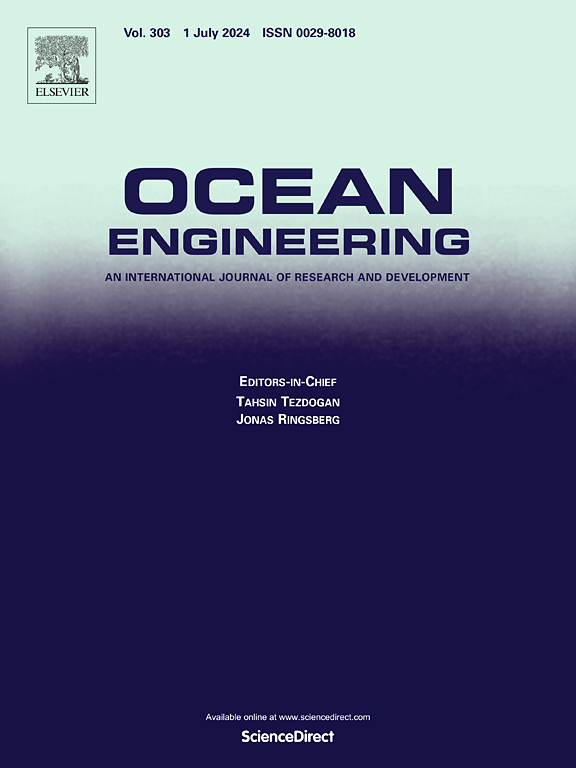Optimization of surface microgrooves and their performance and mechanism of synergistic drag reduction with bionic mucus
IF 4.6
2区 工程技术
Q1 ENGINEERING, CIVIL
引用次数: 0
Abstract
At present, there are fewer researches on the synergistic drag reduction of microgroove surface and mucus, and there are problems such as unclear drag reduction mechanism, mismatch between surface structure and actual working conditions, which makes the drag reduction effect unsatisfactory and the practical application difficult. On the basis of the previous research of this group, the inclined groove wall surface and curved groove wall surface are selected, and the polyethylene glycol monomethyl ether solution is selected as the bionic mucus through the performance comparison. Accordingly, a hydrodynamic model is established and analysed through numerical simulation to derive the change process of the vortex structure, and reveal the drag reduction mechanism based on its evolution law and drag size. The water hole test platform was built, and the force sensor was placed at the back of the experiment to measure the wall friction resistance of the specimen in the water flow. By changing the velocity of water flow and the secretion rate of bionic mucus, the influence of both on the drag reduction rate is investigated. Both the simulation results and the experimental results show that the resistance reduction rate of the two grooves increases with the increase of the mucus secretion rate, and the maximum value of the resistance reduction is reached when the mucus is discharged at a rate of 0.04 m/s when the water flow velocity is 1 m/s and 2 m/s. The synergistic drag reduction mechanism of microgrooves and mucus is concluded, i.e., microgrooves and mucus change the distribution and density of vortex structure in the boundary layer, and with the increase of mucus velocity, the shape of vortex structure becomes coarse and not easy to be intertwined, which effectively reduces the intensity of turbulence bursts, and reduces the drag reduction rate to a higher level.
求助全文
约1分钟内获得全文
求助全文
来源期刊

Ocean Engineering
工程技术-工程:大洋
CiteScore
7.30
自引率
34.00%
发文量
2379
审稿时长
8.1 months
期刊介绍:
Ocean Engineering provides a medium for the publication of original research and development work in the field of ocean engineering. Ocean Engineering seeks papers in the following topics.
 求助内容:
求助内容: 应助结果提醒方式:
应助结果提醒方式:


